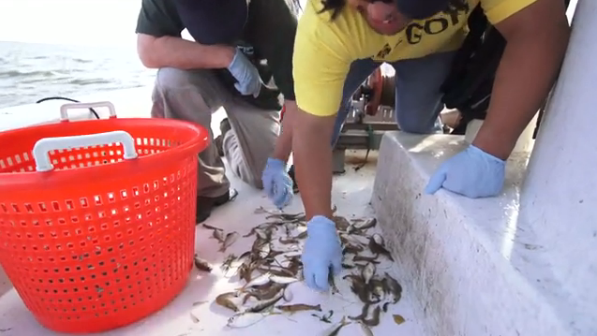Understanding the BP oil spill's health impacts (video)

A scientific study underway along the Gulf Coast is looking at toxic components of crude oil in seafood in order to understand the BP oil disaster's impacts on human and ecosystem health.
The five-year study, funded by the National Institute of Environmental Health Sciences, is known as Gulf Coast Health Alliance: Health Risks Related to the Macondo Spill, or GC-HARMS. It involves scientists from the University of Texas Medical Branch at Galveston, Texas A&M University at Galveston, Louisiana State University and the University of Pennsylvania.
It also involves community groups throughout the region, including Bayou Interfaith Shared Community Organizing (Thibodaux, La.), Center for Environmental and Economic Justice (Biloxi, Miss.), Louisiana Environmental Action Network (Baton Rouge, La.), Mississippi Coalition for Vietnamese Fisherfolk (Gulfport, Miss.), South Bay Community Alliance (Coden, Ala.), United Houma Nation (Houma, La.) and Zion Travelers Cooperative Center (Phoenix, La.).
In the following Louisiana Environmental Action Network video by Jason Berry, scientist John Sullivan of UTMB collects seafood samples in Louisiana's Lake Borgne on a boat operated by fisherman George Barisich while Bryan Parras of Texas Environmental Justice Advocacy Services photographs the work. The researchers are looking at levels of toxic polycyclic aromatic hydrocarbons or PAHs -- components of crude oil known to cause cancer -- in popular seafood species including shrimp, blue crab, oysters and various fin fish. They hope to better understand and communicate the potential health effects for humans eating the tainted seafood.
As Barisich hauls in oysters, one of the fishermen working alongside him jokes, "After the spill, you don't have to put any oil in the pan when you fry them."
Watch here:
(Image of researchers collecting seafood samples is a still from the video.)
Tags
Sue Sturgis
Sue is the former editorial director of Facing South and the Institute for Southern Studies.
